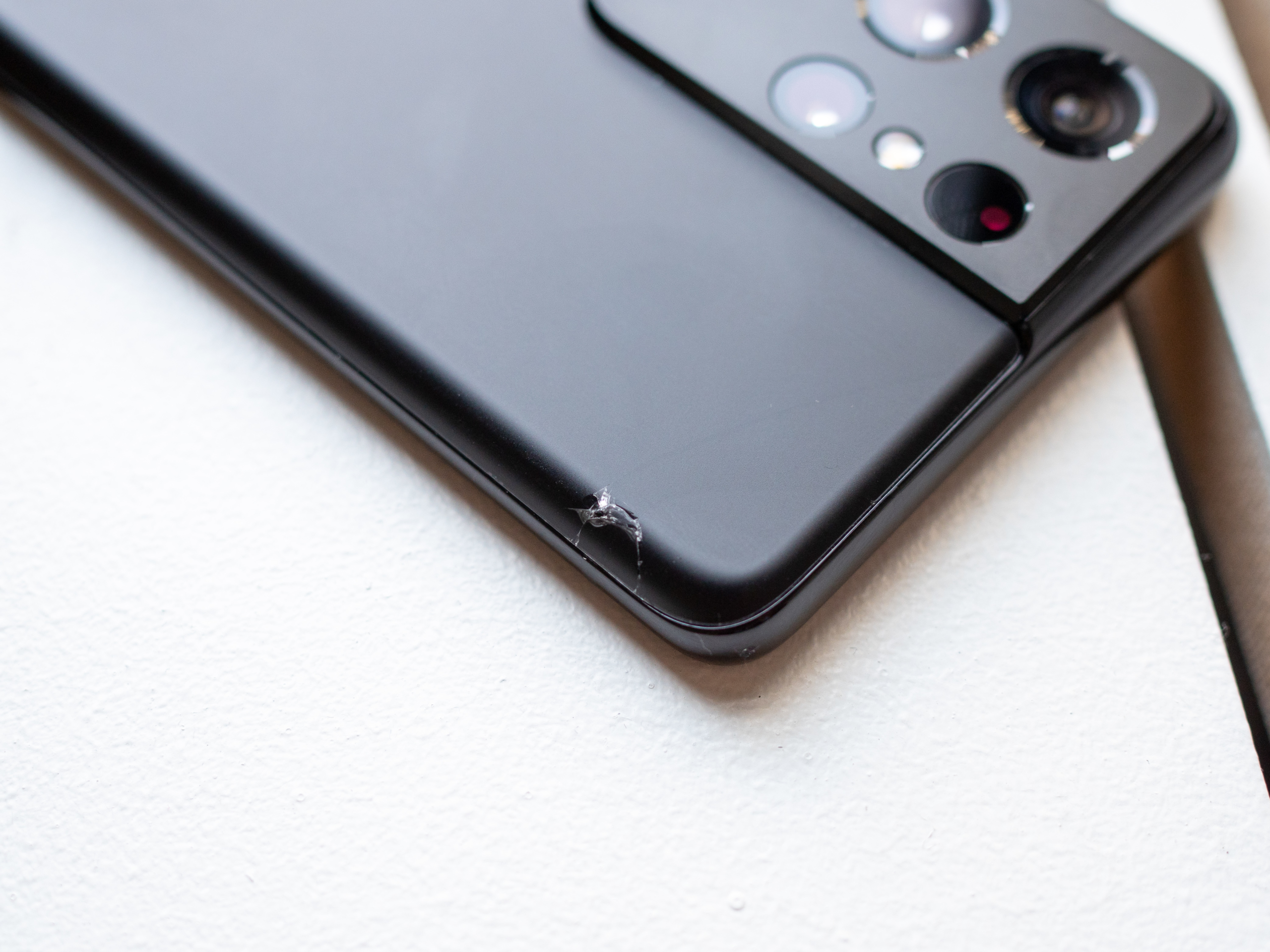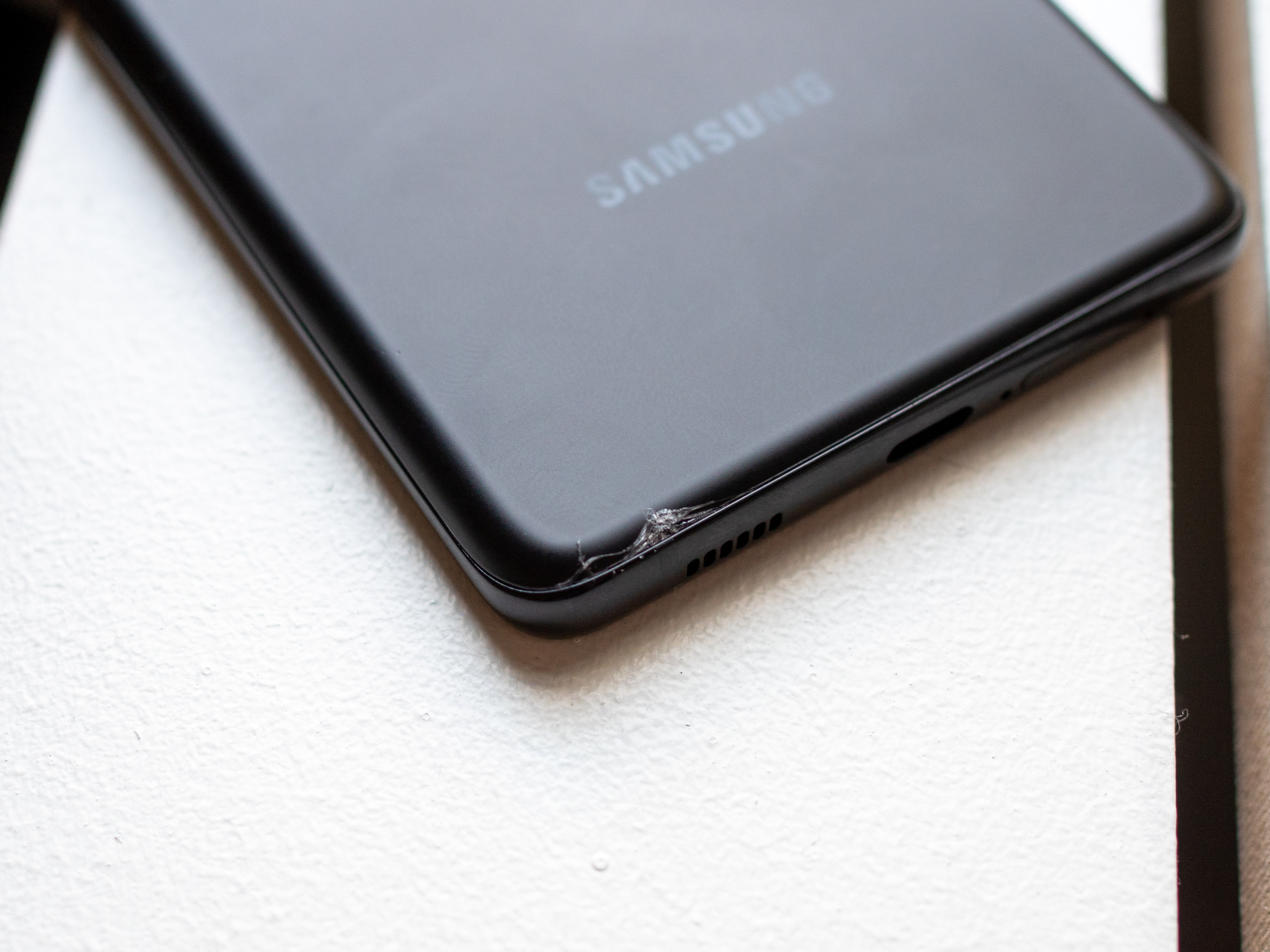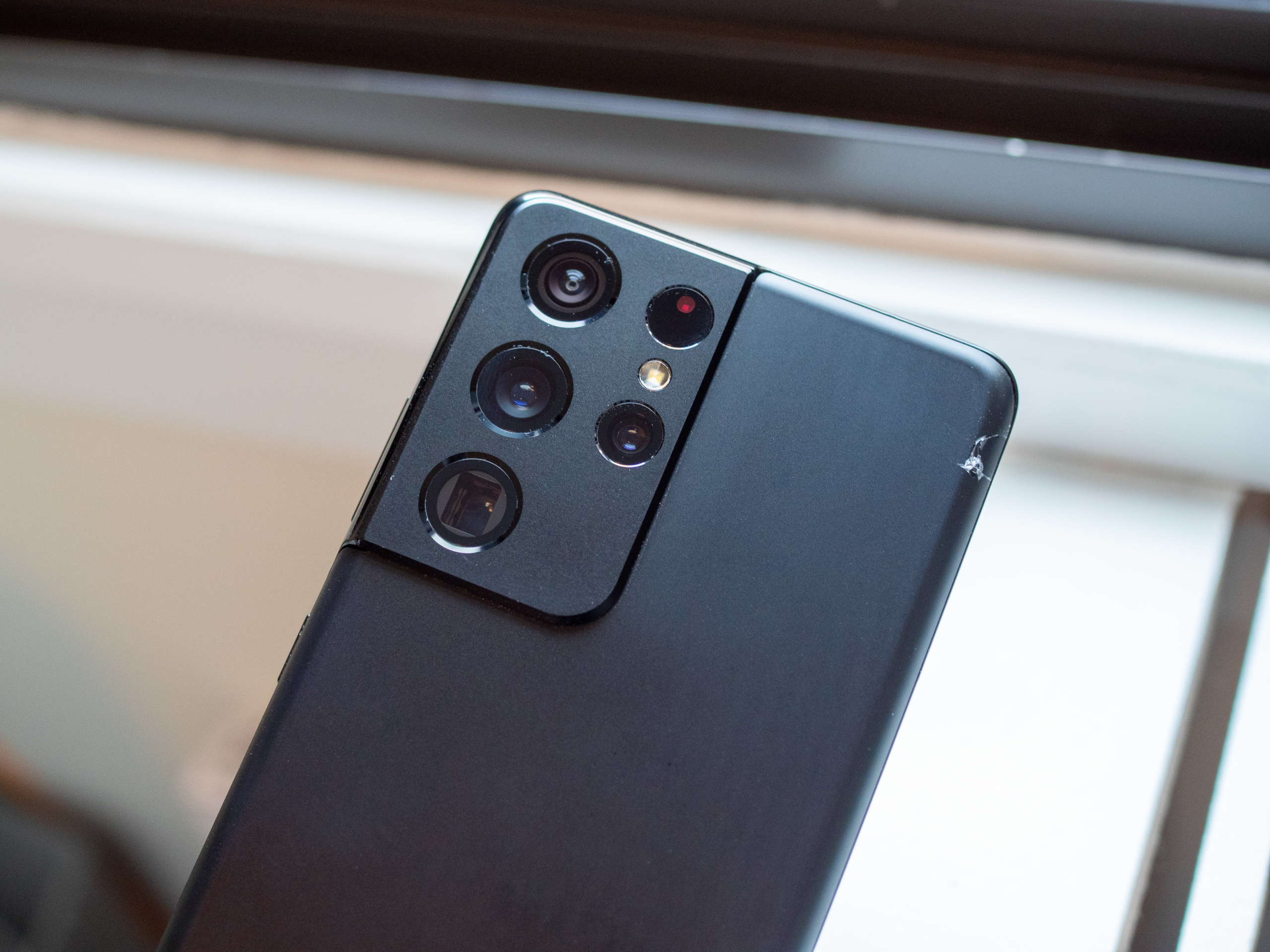I have never done an intentional drop test, torture test, or stress test on a piece of technology. I have, on a few unfortunate occasions, done an unintentional drop test of a phone, however. This weekend was one such time, and it happened to be with my brand-new Galaxy S21 Ultra, which I’ve had for less than two weeks. Ouch.
Trust me when I say it’s cold in Vermont in January. On Sunday, it was about 15 degrees Fahrenheit, with strong winds contributing to a sub-zero feel. I was bundled up in two jackets and gloves, and with those layers, it’s tough to know exactly where your phone is at any given time.
I lost track of my phone for a split second, and it happened: A three-foot drop from my pocket to the ground. Hard, frozen concrete.
Naturally, I didn’t have a case for my Galaxy S21 Ultra. I always use my review units case-free in the early days to evaluate the look and feel of the hardware. (There’s typically a shortage of case options when the phone has yet to hit retail availability as well.) As a result, there was damage:
In all, it’s not nearly as bad as I expected when I heard the thwack of the phone hitting the pavement. With that much weight and two massive panes of glass, I fully expected a catastrophe. Mercifully, the phone landed faceup, sparing the screen glass from any damage. There’s a single scratch on my screen at this point, which I have come to expect from the latest smartphones that have moved to relatively soft glass in an effort to stop shatters and cracks. The back took the full brunt of this drop, and the glass fared … decently.
This Gorilla Glass Victus glass is supposed to be Corning’s strongest yet, with improvements in both drop strength and scratch resistance for the first time. But this isn’t some side-by-side drop test versus an S20 Ultra (nor will I do one), so this is what I have. The two big impact points, in the bottom-left and top-right corners, are exactly what you’d expect from a phone that hit one corner and quickly slapped down on the other. Pieces of glass (and the matte finish) are missing, right on the curves where they’re most vulnerable, and it looks pretty nasty. Frankly, it doesn’t feel that bad, and in the day since the drop, it hasn’t been noticeable in my palm or fingers.

Interestingly, I initially didn’t think the impact points had spawned spidering cracks into the glass. When you look at the phone, you can’t see anything beyond the small damaged areas. But when I went to take photos of them, the way the camera captured light through the matte coating exposed long thin cracks heading out from the biggest point of damage. You can’t see them with the naked eye, nor can you feel them. But they’re there. I suppose this is a win, though — at least the phone looks better than it is, and this bodes well for the prospects of keeping your Galaxy S21+ or S21 Ultra looking good for a long time.
But this also means the next drop of this phone (which I hope never comes) is likely going to be the end of the line for this glass back, now that it’s structurally compromised.
This is the price we pay for demanding beautiful glass backs on phones.
Fortunately, the S21 Ultra’s massive camera array is unscathed. Even the sharp edges, which represent the most exposed pieces of the entire back of the phone, have zero damage. The lenses are perfect, and there are no lasting effects to the optical image stabilization, either.
And yes, I recognize that this is fuel for everyone who says that we should stop complaining about plastic backs on phones like the Galaxy S21. I have no doubt that if I had dropped a case-free Galaxy S21 in the same way, it would be nearly pristine, particularly given how well the frame and camera pod held up in this drop.
But this is the price we pay for holding these beautiful glass objects in our hands every day. But improvements in glass technology (and coatings) have brought us to the point where I can drop the S21 Ultra in freezing temperatures onto concrete and have it still be fully functional and usable. The S21 Ultra isn’t rugged by any means, but it handled this drop pretty well.
Editors' Recommendations
- Samsung has a new (and cheaper) way to buy the Galaxy S23
- Having Galaxy S24 Ultra camera issues? A fix may be coming soon
- Have a Samsung Galaxy S23? Don’t update your phone to One UI 6.1
- The Galaxy S24 just got a big camera update. Here’s what’s new
- 5 things I want to see in the Samsung Galaxy S25 Ultra







